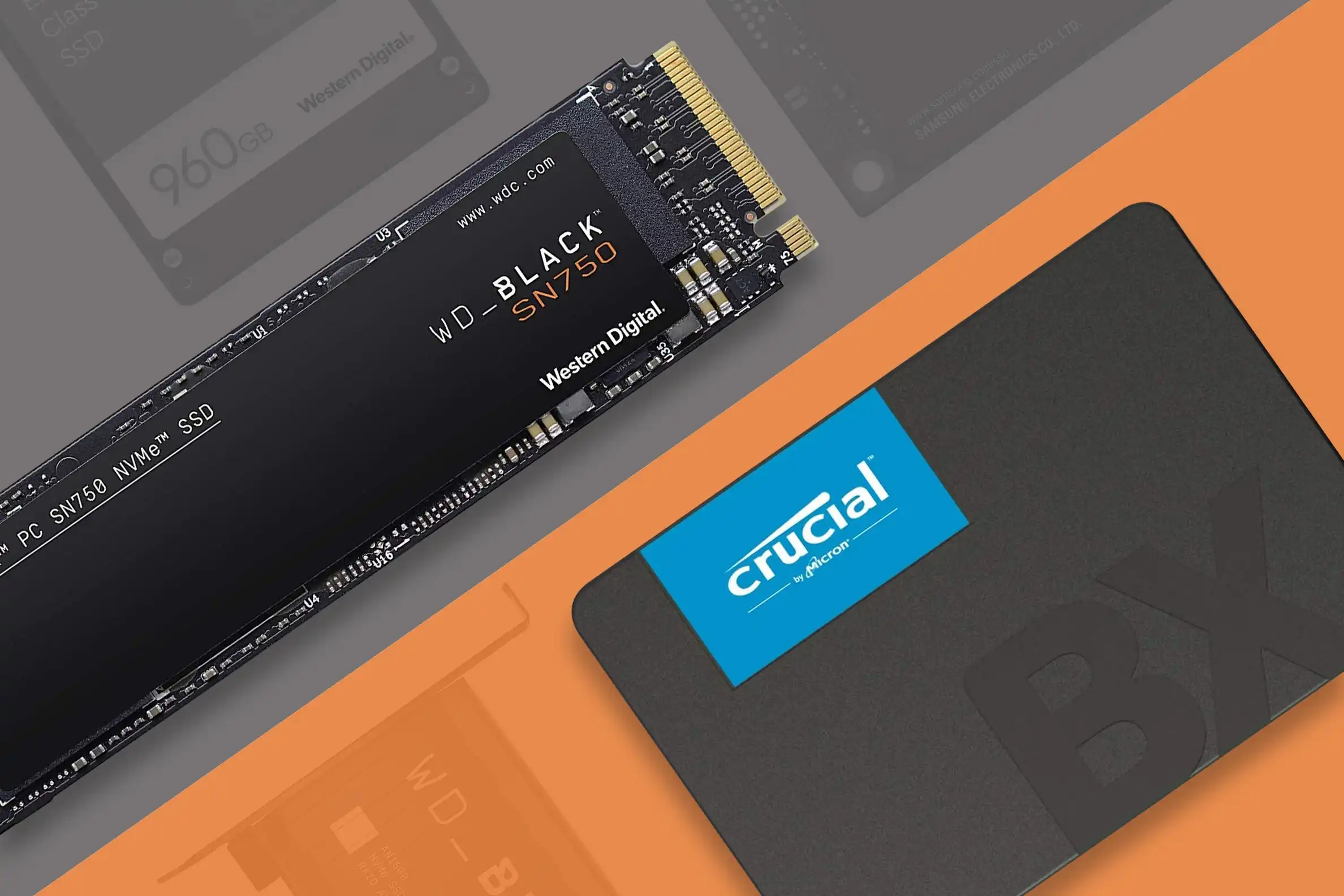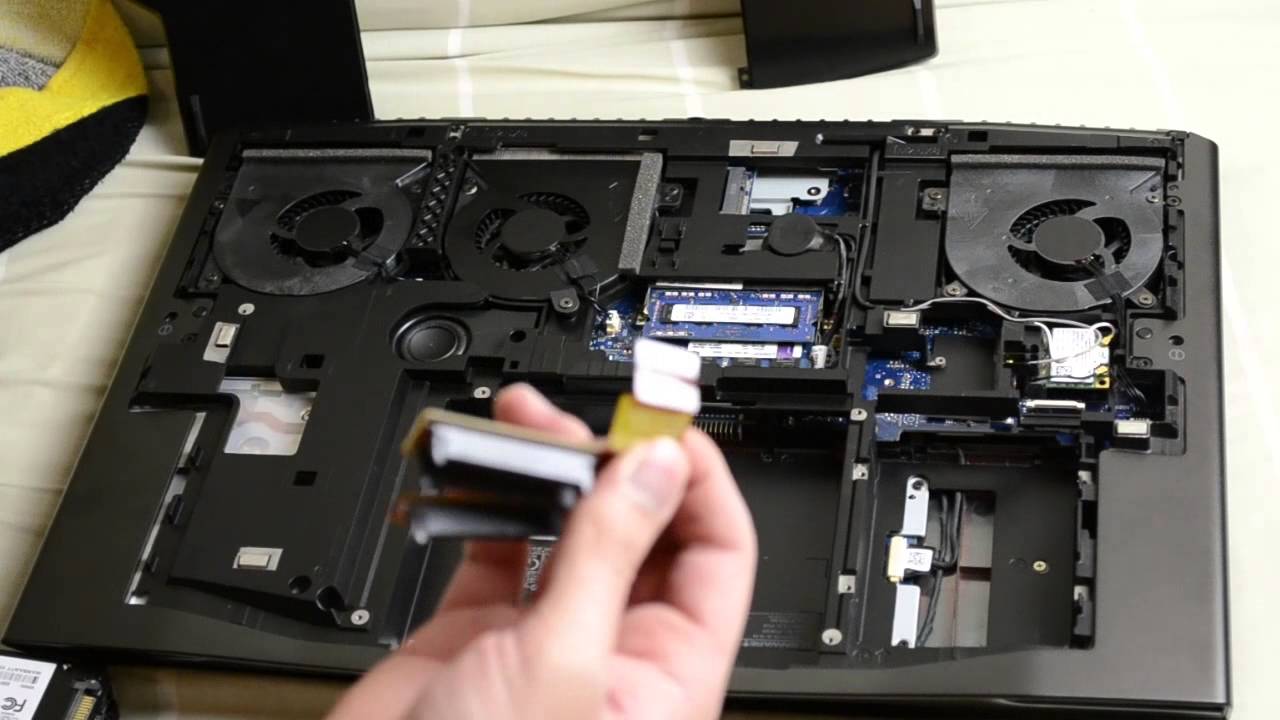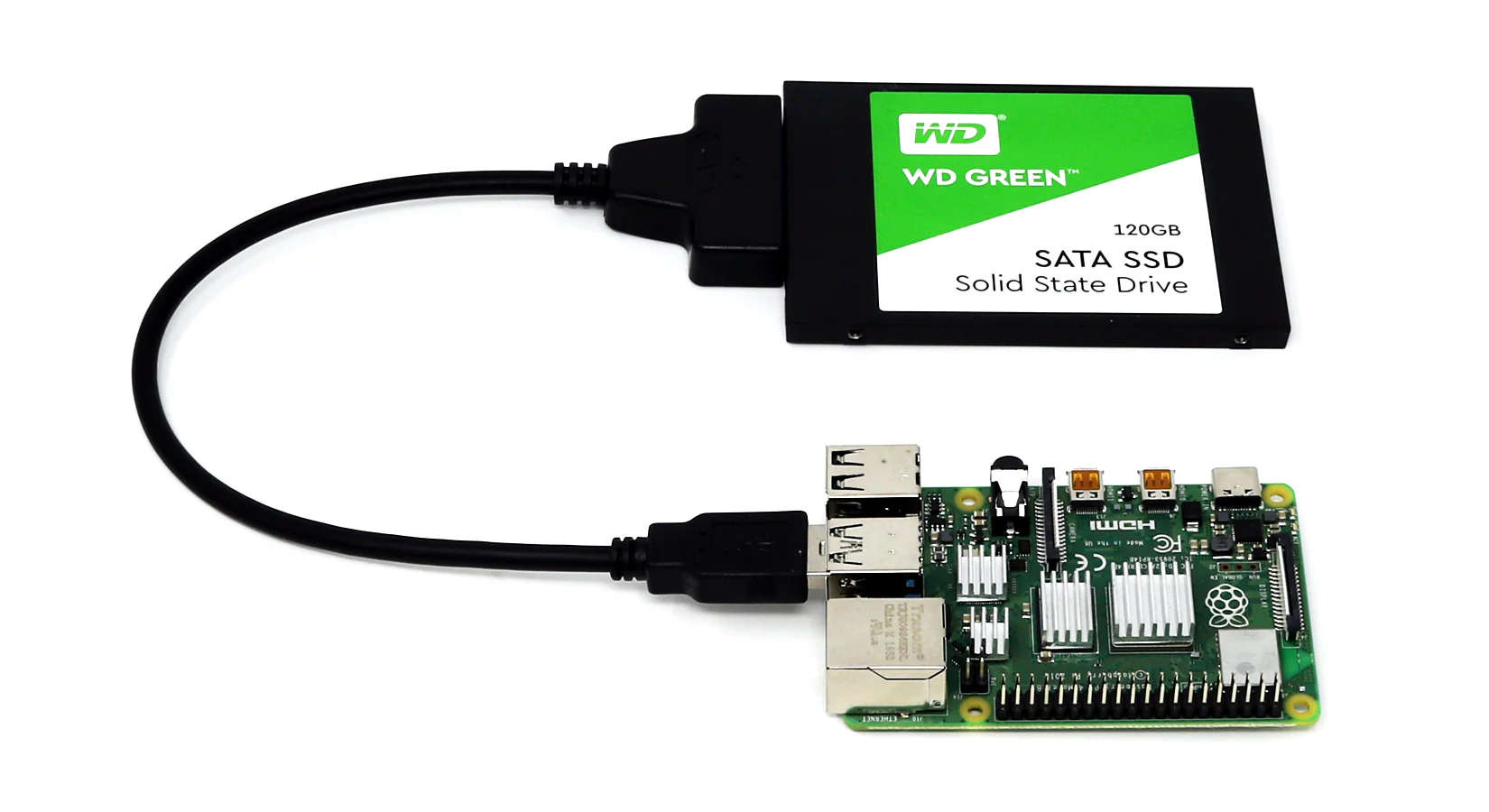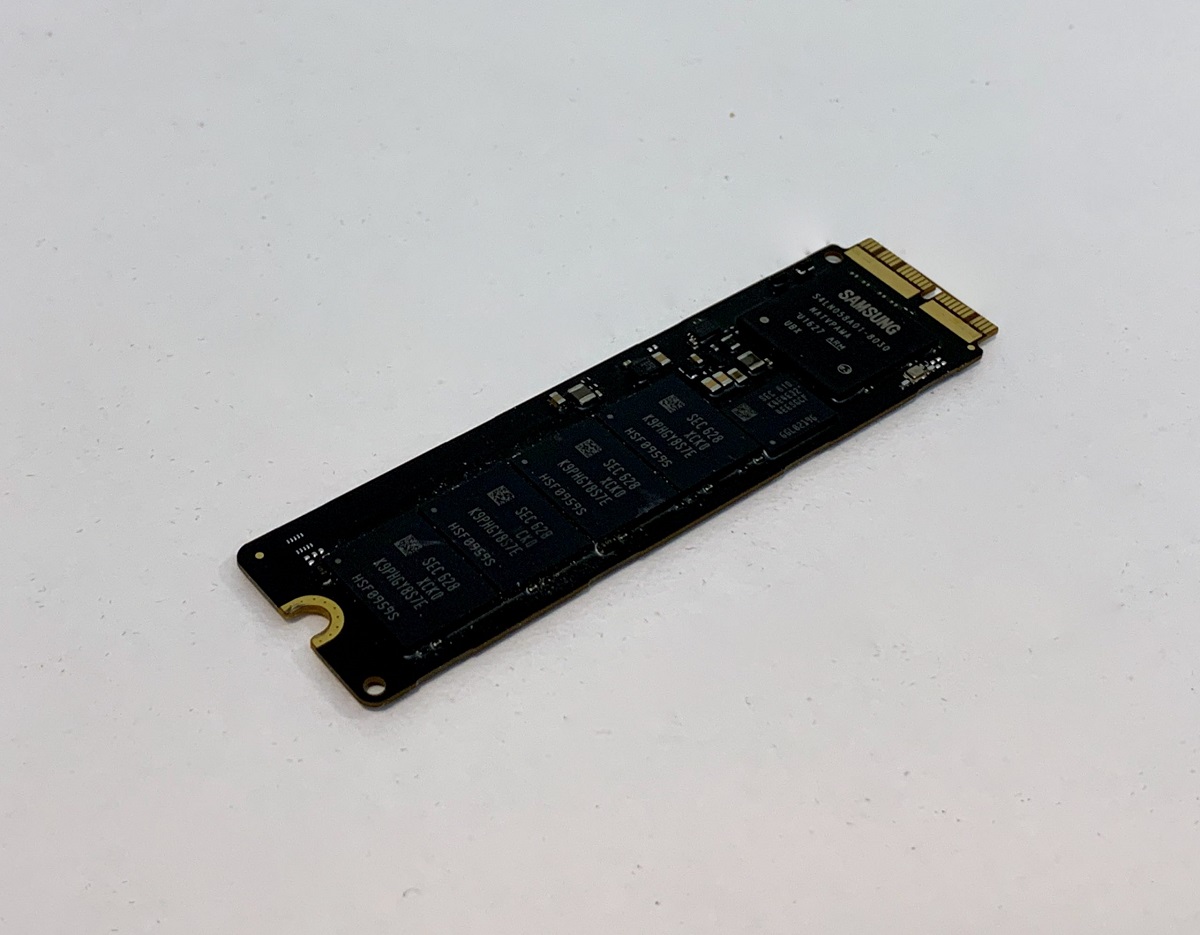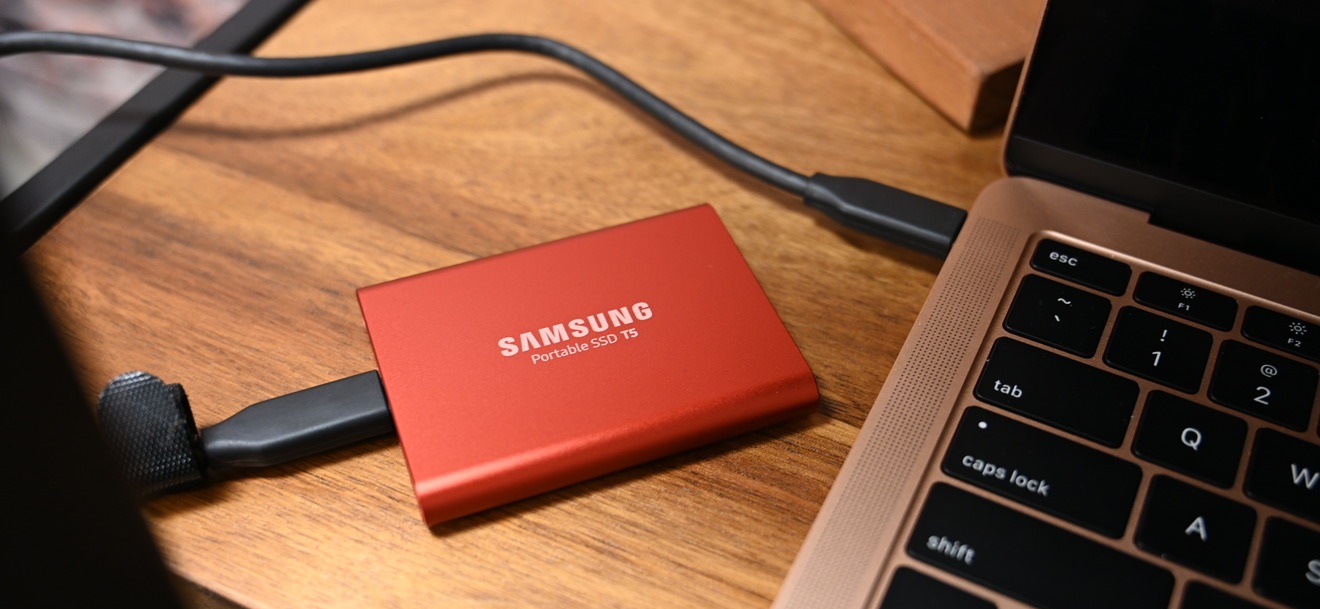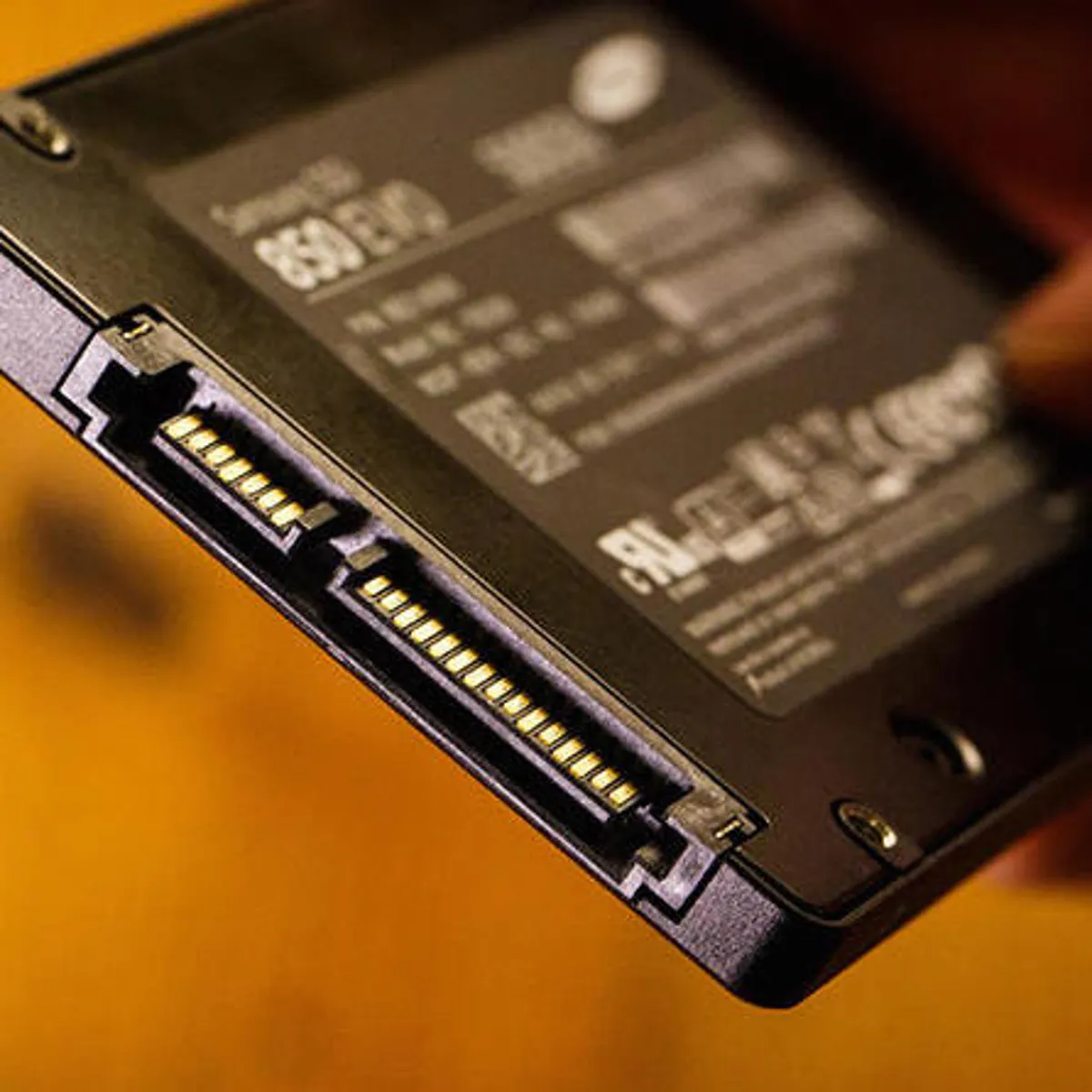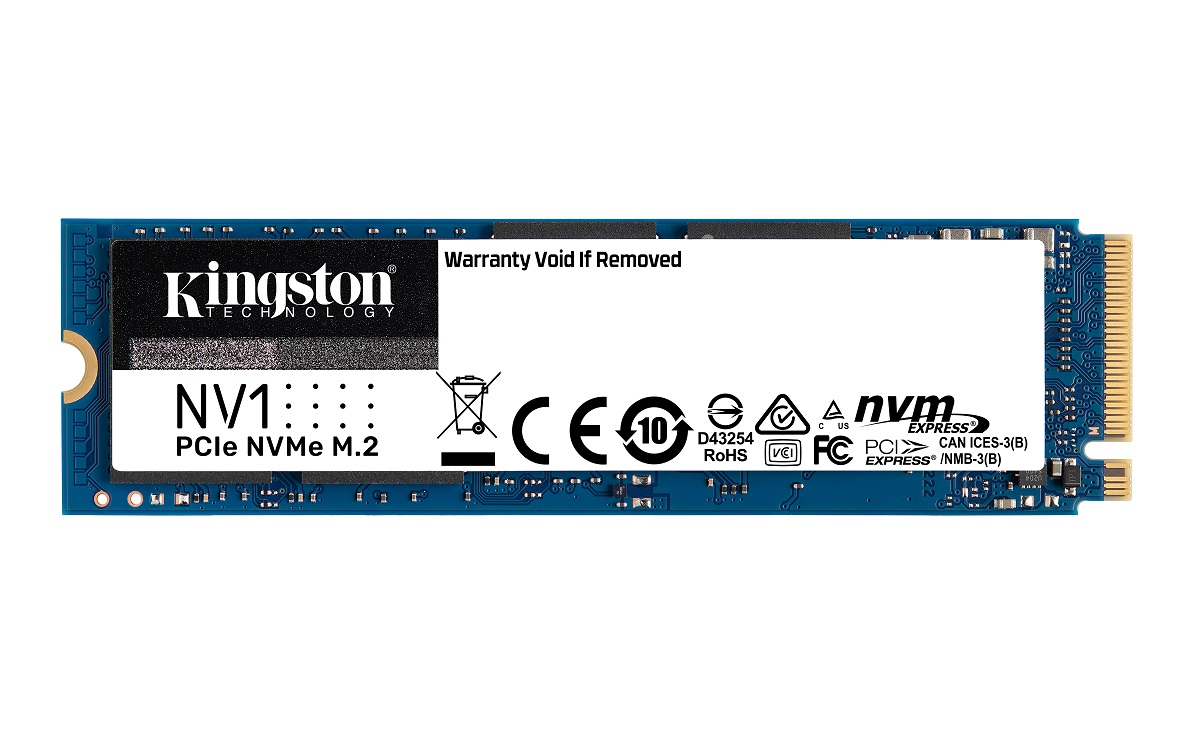Introduction
Welcome to the world of solid-state drives (SSDs), the game-changers in data storage technology. As technology continues to evolve, traditional hard disk drives (HDDs) are being overshadowed by the superior performance and reliability offered by SSDs. Whether you’re upgrading your computer or building a new one, choosing the right SSD can have a significant impact on your system’s speed, responsiveness, and overall performance. In this guide, we will explore the key factors to consider when choosing an SSD to help you make an informed decision.
SSDs are a type of storage device that use flash memory to store data electronically. This differs from HDDs, which rely on spinning disks and mechanical components. The result is a significantly faster, more durable, and energy-efficient storage solution. But with so many options available on the market, it can be overwhelming to select the right SSD for your needs.
In this guide, we will break down the essential factors to consider when choosing an SSD for your system. We will explore the importance of storage capacity, form factor, performance, interface, endurance, power consumption, cost, and brand reputation. By understanding these factors and their implications, you will be able to determine the perfect SSD that best suits your specific requirements.
Whether you’re a gamer looking to accelerate load times or a professional needing fast data transfer speeds for intensive tasks, choosing the right SSD is crucial. So, let’s dive in and explore the key considerations you should keep in mind when selecting an SSD that will maximize the performance and efficiency of your system.
Understanding SSDs
Before diving into the various factors to consider when choosing an SSD, it’s important to have a basic understanding of how these storage devices work. As mentioned earlier, SSDs utilize flash memory as their primary storage medium. Unlike HDDs, which rely on mechanical components and spinning disks, SSDs have no moving parts, making them more resistant to shock, vibration, and physical damage.
One of the key advantages of SSDs is their incredible speed. Since there are no spinning disks involved, data can be accessed and written to the drive much faster than with HDDs. This results in quicker boot times, faster application launches, and improved overall system responsiveness.
Storage capacity is an essential consideration when choosing an SSD. SSDs come in a range of capacities, from as small as 128GB to as large as several terabytes. The capacity you choose will depend on your specific needs and usage. For example, if you’re a graphic designer or video editor working with large files, you’ll likely require more storage space.
While storage capacity is important, it’s also crucial to consider the SSD’s form factor. Most consumer SSDs follow the 2.5-inch form factor, making them compatible with most laptops and desktops. However, newer form factors such as M.2 are becoming increasingly popular as they offer smaller, more compact designs that can fit into ultra-slim laptops and small form factor builds.
The performance of an SSD is another crucial factor to consider. Performance is usually measured in terms of read and write speeds. These speeds determine how quickly data can be retrieved from or written to the SSD. Higher speeds result in faster file transfers, improved multitasking, and decreased loading times in games and applications.
The interface of the SSD, whether SATA or NVMe, also plays a significant role in performance. SATA SSDs offer good performance for everyday computing tasks and are compatible with most systems. On the other hand, NVMe SSDs use the PCIe interface, which provides significantly faster speeds and is ideal for tasks that require large data transfers, such as video editing or professional 3D rendering.
Endurance, as measured by Terabytes Written (TBW), is another important consideration. SSDs have a limited number of write cycles before their performance starts to degrade. It’s essential to choose an SSD with sufficient endurance for your usage patterns to ensure longevity.
Power consumption is a factor to consider, especially for laptops and portable devices. SSDs typically consume less power than HDDs, resulting in improved battery life for mobile devices.
Finally, cost and brand reputation are two factors that should not be overlooked. SSD prices have decreased significantly in recent years, making them more affordable than ever. However, balancing cost with performance and reliability is crucial. Opting for a reputable brand and ensuring a good warranty is in place can offer peace of mind and better long-term support.
By understanding how SSDs work and considering these various factors, you’ll be well-equipped to make an informed decision when choosing an SSD that best suits your needs. Let’s now explore each factor in more detail to help you make the right choice for your system.
Storage Capacity
When choosing an SSD, one of the first factors to consider is the storage capacity. The storage capacity refers to the amount of data that the SSD can store. SSDs come in a range of different capacities, so it’s important to choose one that meets your specific needs.
The storage capacity you require will depend on how you plan to use your computer. If you’re primarily using your computer for basic tasks like web browsing, document editing, and email, a lower storage capacity of 128GB to 256GB may be sufficient. However, if you’re a gamer, graphic designer, or video editor who needs to store large files and applications, you’ll likely need a higher capacity SSD, such as 512GB or even 1TB.
It’s important to note that the actual usable capacity of an SSD is slightly lower than what is advertised. This is because a portion of the storage is reserved for formatting and maintenance tasks. So, if you purchase a 256GB SSD, you might find that only around 240-250GB is usable.
When considering storage capacity, it’s also worth thinking about future needs. As files and applications continue to increase in size, it may be wise to opt for a higher capacity SSD to accommodate future growth. Additionally, if cost allows, having some extra storage space can prevent your SSD from filling up too quickly and potentially impacting performance.
Remember that you can always supplement your SSD’s storage capacity with external storage solutions such as external hard drives or cloud storage services. This can provide additional flexibility and allow you to offload less frequently accessed files, freeing up space on your SSD.
Overall, the storage capacity of an SSD is an important factor to consider when choosing the right one for your needs. Assess your usage patterns, determine the amount of storage required for your files and applications, and take into account potential future growth. By doing so, you’ll be able to select an SSD with a capacity that will best meet your storage requirements, ensuring ample space for your data while maintaining optimal performance.
Form Factor
Another crucial factor to consider when choosing an SSD is the form factor. The form factor refers to the physical size and shape of the SSD, which determines its compatibility with different devices and installation options.
The most common form factor for consumer SSDs is the 2.5-inch form factor. This form factor is similar to a traditional laptop hard drive in size and shape, making it compatible with most laptops and desktops. 2.5-inch SSDs typically use the SATA interface, making them easy to install as a replacement for traditional hard drives.
However, in recent years, smaller and more compact form factors have gained popularity. One such form factor is the M.2 SSD. M.2 SSDs are smaller in size and plug directly into the motherboard without requiring cables or mounting brackets. This makes them a perfect choice for ultra-slim laptops, compact desktops, and small form factor builds.
M.2 SSDs come in different lengths, denoted by key notches such as “B-key” or “M-key.” It’s essential to check the compatibility of the M.2 slot on your motherboard and choose the correct key notch to ensure a proper fit.
Another common form factor for enterprise-grade SSDs is the PCIe card form factor. These SSDs are mounted on expansion cards that plug into a PCIe slot on the motherboard. PCIe SSDs offer even faster speeds than SATA or M.2 SSDs, making them well-suited for demanding applications that require high-performance storage.
When selecting an SSD, it’s important to determine the form factor supported by your device and your specific requirements. If you’re upgrading an existing laptop or desktop, ensure compatibility with the available drive bays or connectors. If you’re building a new system, consider the form factor that best suits your desired size and performance goals.
Ultimately, the form factor of the SSD will determine its ease of installation and compatibility with your system. By understanding the different form factors available and considering your specific device and installation requirements, you can choose an SSD that seamlessly integrates into your system, maximizing its performance and storage capabilities.
Performance (Read/Write Speeds)
Performance is a critical factor to consider when choosing an SSD, as it directly impacts the speed and responsiveness of your system. The performance of an SSD is determined by its read and write speeds.
Read speed refers to how quickly data can be retrieved from the SSD, while write speed refers to how fast data can be written to the SSD. These speeds are measured in megabytes per second (MB/s) and can vary significantly between different SSD models.
The faster the read and write speeds of an SSD, the faster your system will be in tasks like booting up, launching applications, transferring files, and loading games. High-performance SSDs can dramatically reduce waiting times and provide a smoother and more responsive computing experience.
When comparing the read and write speeds of different SSDs, it’s important to note that these speeds can vary depending on the capacity of the SSD. Typically, larger capacity SSDs tend to have faster speeds compared to lower capacity ones. However, it’s essential to evaluate the performance of the specific SSD model you’re considering to make an informed decision.
For everyday computer usage, such as web browsing and document editing, SSDs with read speeds around 500MB/s and write speeds around 400MB/s can provide a significant performance boost compared to traditional hard drives.
If you’re a content creator, gamer, or work with large files, it may be worth investing in an SSD with even higher performance. Some high-end SSDs can have read and write speeds surpassing 3000MB/s, enabling lightning-fast data transfers and reducing loading times in resource-intensive applications.
It’s important to note that the actual performance of an SSD can be influenced by other factors as well, such as the SSD controller and the type of NAND flash memory used. Therefore, it’s beneficial to research reviews and performance benchmarks of different SSD models to get a better understanding of their real-world performance.
Ultimately, when selecting an SSD based on performance, consider your specific needs and usage patterns. If you require fast data transfers and quick access to files, opt for an SSD with higher read and write speeds. However, if your usage is more focused on basic computing tasks, a mid-range SSD with decent speeds may be sufficient.
By choosing an SSD with the right performance capabilities for your needs, you can ensure that your system operates at its best, delivering exceptional speed and responsiveness for your day-to-day tasks and demanding applications.
Interface (SATA vs NVMe)
The interface of an SSD is a crucial factor that affects its performance and compatibility with your system. The two most common interfaces for consumer SSDs are SATA (Serial Advanced Technology Attachment) and NVMe (Non-Volatile Memory Express).
SATA SSDs have been around for a while and are widely supported by most laptops and desktops. They offer good performance for everyday computing tasks and are typically available in the 2.5-inch form factor. SATA SSDs have a maximum sequential read/write speed of around 550MB/s, which is still significantly faster than traditional hard drives.
On the other hand, NVMe SSDs provide a significant performance boost, especially for tasks that demand high-speed data transfer. NVMe SSDs use the PCIe (Peripheral Component Interconnect Express) interface, which is designed to take advantage of the faster PCIe lanes provided by modern motherboards. This interface allows NVMe SSDs to achieve much higher read and write speeds compared to SATA SSDs.
A typical NVMe SSD can reach sequential read/write speeds of up to 3500MB/s, significantly outperforming SATA SSDs. This makes NVMe SSDs an excellent choice for professionals and enthusiasts who work with large files, such as video editors, content creators, and gamers who require fast loading times.
However, it’s important to note that to take full advantage of the higher speeds offered by NVMe SSDs, your system needs to support the NVMe interface. This means having an available M.2 slot on your motherboard or using a PCIe adapter card for PCIe-based NVMe SSDs.
If your system doesn’t support NVMe, opting for a SATA SSD is still a reliable choice. SATA SSDs are more widely available, cost-effective, and provide a substantial improvement over traditional hard drives.
When deciding between SATA and NVMe, consider your specific requirements and budget. If you’re running resource-intensive tasks that benefit from high-speed data transfer, NVMe is the ideal option. However, for everyday usage and general computing needs, a SATA SSD will offer a significant upgrade in performance at a more affordable price.
It’s worth mentioning that some SSDs offer a hybrid solution, combining both SATA and NVMe technologies. These hybrid SSDs, known as SATAe or SATA Express, provide faster speeds than traditional SATA but are slower than NVMe SSDs. They may be a suitable choice if your system supports SATAe and you want a performance boost without the higher costs of NVMe.
Ultimately, choosing the right interface for your SSD depends on your specific needs, system compatibility, and budget. Consider the level of performance you require and the capabilities of your system to make an informed decision between SATA and NVMe.
Endurance (TBW)
Endurance, measured in Terabytes Written (TBW), is an important factor to consider when choosing an SSD. It refers to the amount of data that can be written to the SSD before its performance starts to degrade.
Each SSD has a finite number of write cycles it can endure before the flash memory cells begin to wear out. As data is written and erased on the SSD over time, the cells gradually degrade, leading to potential performance issues and even the failure of the drive.
TBW is a specification provided by manufacturers that indicates the total amount of data that can be written to the SSD over its lifetime. It serves as a measure of the SSD’s durability and longevity. The higher the TBW rating, the longer the SSD is expected to last.
When considering endurance, it’s essential to assess your usage patterns. If you regularly work with large files and perform frequent read and write operations, you should opt for an SSD with a higher TBW rating to ensure it can withstand the demands of your workload.
For typical consumer usage, SSDs with TBW ratings of 100-200TBW are considered sufficient. These SSDs can handle everyday computing tasks, such as web browsing, document editing, and media consumption, without experiencing significant performance degradation over their lifespan.
However, for more demanding tasks, such as content creation or data-intensive workloads, it’s advisable to select an SSD with a higher TBW rating, ideally above 300TBW. This will ensure that the SSD can handle the heavy write operations associated with these tasks and maintain its performance over a more extended period.
It’s important to note that TBW ratings are provided as an estimate based on specific write patterns and may differ in real-world usage scenarios. Factors such as the type of NAND flash memory used (SLC, MLC, TLC, or QLC) can also influence the endurance of the SSD.
While SSDs have limited endurance, it’s worth mentioning that modern SSDs are designed with advanced wear-leveling algorithms that distribute data writes evenly across the drive, prolonging its lifespan. Additionally, most SSDs come with warranties that cover their expected lifespan, providing additional assurance.
When selecting an SSD based on endurance, consider your usage patterns, the TBW rating provided by the manufacturer, and the warranty coverage. By choosing an SSD with the appropriate endurance rating, you can ensure that it will endure the demands of your workload and provide reliable performance for years to come.
Power Consumption
Power consumption is an important consideration when selecting an SSD, especially for laptops and portable devices that rely on battery power. SSDs are known for their energy efficiency compared to traditional hard drives, but there can still be variations in power consumption among different SSD models.
The power consumption of an SSD depends on several factors, including the SSD’s design, controller, and NAND flash memory technology used. Generally, SSDs consume less power than HDDs because they lack moving parts and rely on flash memory for data storage.
Lower power consumption not only helps prolong battery life in laptops but also reduces heat generation, which can contribute to a cooler and quieter system overall. Additionally, it can be a critical factor for those using low-power systems or specific applications that prioritize energy efficiency.
When comparing power consumption between different SSDs, it’s important to consider both active and idle power consumption. Active power consumption is the power consumed during read and write operations, while idle power consumption refers to the power consumed when the SSD is not being actively used.
Generally, SATA SSDs have lower power consumption compared to NVMe SSDs. This is because NVMe SSDs tend to utilize PCI Express lanes, which consume slightly more power than the traditional SATA interface.
While the power consumption difference between SATA and NVMe SSDs may be minor in daily usage scenarios, it can be a factor to consider, especially if you prioritize energy efficiency or have specific power limitations.
SSDs can also have different power management features that contribute to lower power consumption. These features include technologies like DevSleep or HIPM+DIPM (Host Initiated Power Management and Device Initiated Power Management), which allow the SSD to enter low-power states when not in use, conserving energy.
When selecting an SSD based on power consumption, consider your specific needs and the requirements of your device. If you prioritize energy efficiency and maximum battery life, choosing an SSD with lower power consumption can have a positive impact.
It’s worth noting that power consumption is generally low across most SSD models, and the difference in power efficiency may not be a significant factor for desktop users who have access to a constant power supply.
By considering the power consumption specifications and features provided by manufacturers, you can choose an SSD that aligns with your desired energy efficiency goals, whether it’s for extending battery life in laptops or reducing power usage in low-power systems.
Cost
Cost is an important factor to consider when choosing an SSD, as it directly affects your budget and the overall value you receive from the storage device. Over the years, the cost of SSDs has significantly decreased, making them more affordable and accessible to a broader range of consumers.
When comparing the cost of SSDs, several factors contribute to the overall price. One of these factors is the storage capacity of the SSD. Generally, higher capacity SSDs have a higher price tag compared to lower capacity ones. If you require a large storage capacity, be prepared to pay a higher price.
Another cost-determining factor is the SSD’s performance. SSDs with higher read and write speeds or advanced features such as NVMe interface may come at a premium price compared to basic SATA SSDs. Consider your specific needs and budget to strike a balance between performance and cost.
Brand and reputation can also influence the price of an SSD. Well-established and reputable brands may charge a higher price due to their track record of quality and customer support. However, it’s important to note that there are also budget-friendly SSD options available from lesser-known brands that may offer decent performance and reliability.
It’s advisable to research and compare the prices of different SSD models from various retailers to find the best deal. Keep an eye out for promotions, discounts, and sales events, as they can significantly reduce the cost of an SSD.
Additionally, consider the warranty provided by the manufacturer. A longer warranty period may reflect higher product quality and better after-sales support. Some manufacturers offer extended warranties or additional services like data recovery, which can add value to the overall cost of the SSD.
Ultimately, when considering the cost of an SSD, it’s crucial to find the balance between your budget and the desired specifications and features. Assess your storage needs, performance requirements, and research different options to identify an SSD that provides a good combination of affordability and performance.
Remember that an SSD is an investment in the long-term performance and reliability of your system. Opting for a high-quality SSD from a reputable brand, even if slightly more expensive, can pay off in terms of improved speed, durability, and overall satisfaction.
Brand Reputation and Warranty
When selecting an SSD, brand reputation and warranty are crucial factors to consider. Choosing a reputable brand with a strong track record can provide assurance of quality, reliability, and customer support.
Well-established brands often invest in extensive research and development to produce high-quality SSDs that undergo rigorous testing and quality control processes. They also tend to have a strong customer support system in place, offering technical assistance, firmware updates, and timely responses to customer queries and concerns.
Reputable brands are more likely to use reliable components, advanced technologies, and innovative features in their SSDs, ensuring optimal performance and longevity. They also tend to have good relationships with suppliers, ensuring a consistent supply of high-quality components for their SSD manufacturing processes.
It’s important to note that brand reputation is not solely determined by popularity or market presence. Consumer reviews and expert recommendations can provide valuable insights into the experiences and satisfaction of previous SSD buyers. Researching customer feedback, professional reviews, and independent testing can help you assess the overall reputation of a brand.
In addition to brand reputation, the warranty provided by the manufacturer is an essential consideration. SSDs come with varying warranty periods, typically ranging from three to five years. Some manufacturers offer extended warranties for select SSD models, which can provide additional peace of mind.
The warranty period not only reflects the manufacturer’s confidence in their product but also provides coverage for potential failures or defects. In the event of an SSD failure within the warranty period, you can have the SSD repaired or replaced at no additional cost.
It’s important to review the terms and conditions of the warranty, as they may have specific requirements or limitations. Some warranties may require registering the SSD within a certain timeframe or may have restrictions on certain usage scenarios, such as usage in enterprise environments or overclocked systems.
When choosing an SSD, consider the brand reputation and the warranty offered. A reputable brand with a solid track record and a generous warranty can provide greater confidence in the product’s quality and longevity. It also ensures that in case of any issues, you will have the necessary support and assistance from the manufacturer.
Be sure to research and compare the warranties offered by different SSD manufacturers to determine which one aligns best with your needs and budget. Taking these factors into account will help you make an informed decision and select an SSD with excellent brand reputation, reliable performance, and adequate warranty coverage.
Conclusion
Choosing the right SSD is a vital decision that can have a significant impact on your system’s performance, speed, and overall experience. By considering the key factors discussed in this guide, you can make an informed decision and select the SSD that best suits your specific needs.
Understanding the storage capacity requirements, form factor compatibility, and performance specifications such as read/write speeds and interface options are crucial steps in finding the perfect SSD. Factoring in considerations like endurance, power consumption, cost, brand reputation, and warranty can further refine your selection process.
Take the time to assess your usage patterns, prioritize your requirements, and set a budget that aligns with your needs. Consider future needs and technological trends to ensure that the SSD you choose is future-proof and meets your storage requirements for years to come.
Additionally, research and compare the offerings of different manufacturers and SSD models. Read user reviews, professional opinions, and performance benchmarks to have a comprehensive understanding of the SSD’s real-world performance and reliability.
Remember, selecting the right SSD is a balance between performance, suitability, and affordability. It’s not just about getting the fastest or largest capacity SSD, but finding the one that best fits your specific needs and offers the best value for your investment.
With careful consideration and thorough research, you can find an SSD that enhances your system’s speed, responsiveness, and overall performance. Whether you’re a casual user, a gamer, or a professional in need of high-performance storage, the right SSD can make a world of difference in your computing experience.
So, take the plunge, upgrade your storage, and enjoy the benefits of a reliable and efficient solid-state drive. Happy computing!







